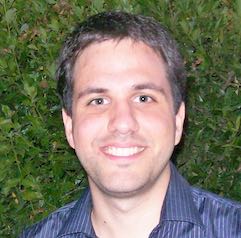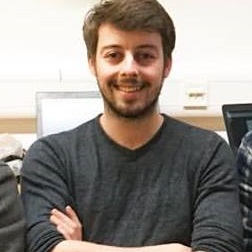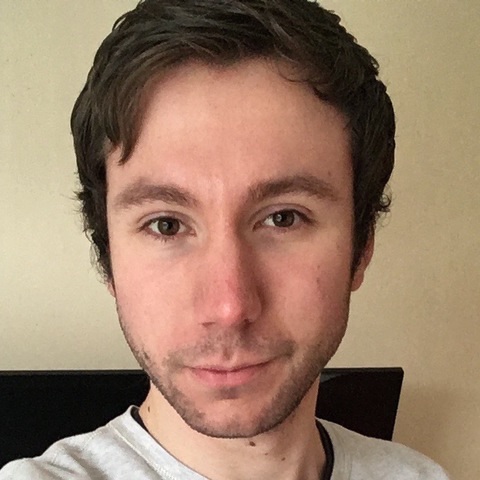People
Listed here are all collaborators, former members and current members of the NeuroImaging Statistics Oxford (NISOx) group (formerly Neuroimaging Statistics at Warwick).
Faculty
- Thomas Nichols
-

Thomas Nichols is a Wellcome Trust Senior Research Fellow in Basic Biomedical Science and the Professor of Neuroimaging Statistics at the Oxford Big Data Institute. He previously was a Professor in the Warwick Department of Statistics and WMG, and before that the Director of Modelling & Genetics at the GlaxoSmithKline Clinical Imaging Centre at Hammersmith Hospital in London, where he worked on statistical methods for fMRI in the context of clinical trials, and integrating genetic data into brain image analyses. Before coming to the UK he was an Associate Professor of Biostatistics at the University of Michigan, and in 2001 received his Ph.D. in statistics from Carnegie Mellon University where he also trained in cognitive neuroscience. He has been active in the field of functional neuroimaging since 1992, when he worked at the University of Pittsburgh’s PET Center as a programmer and statistician. Dr. Nichols’ research focuses on modelling and inference of neuroimaging data, including PET, fMRI & M/EEG. [CV]
Researchers
- Soroosh Afyouni
-

Soroosh Afyouni is a postdoctoral research fellow at the University of Oxford. He is currently developing methods for threshold-free cluster enhancement (TFCE) method and multiple testing methods for neuroimaging data-sets. He has joined Oxford after undertaking an early career fellowship at the Warwick Institute of Advanced Study. In 2016, Soroosh received his PhD in Engineering from the University of Warwick where he developed methods for serial-correlation and Stochastic Block Modelling in functional connectivity of the human brain. In 2012, he received his Master of Engineering in Electronic Engineering from University of Birmingham where he worked on simulating the Spin-Echo sequences in Magnetic Resonance Imaging. Soroosh’s primary research interest is in functional connectivity and population connectomics.
Graduate Students
- Marco Palma
-

Marco Palma is a PhD student in Statistics at the University of Warwick on the OxWaSP CDT program, supervised by Thomas Nichols, Shahin Tavakoli and Julia Brettschneider. He is interested in developing high dimensional inferential methods for neuroimaging and is currently working on brain age estimation from structural imaging. He earned a Master’s degree in Statistical Sciences from the University of Bologna, with the final thesis written at LMU - Munich about regression models for multivariate functional data with application to brain images. In addition, as a student admitted to the Collegio Superiore in Bologna he had the opportunity to apply statistical methods in an interdisciplinary environment, working on several topics ranging from pain medicine to translation studies.
- Tom Maullin
-

Tom Maullin is a DPhil student in the Big Data Institute at the University of Oxford. His research interests include distributed machine learning, developing data sharing techniques and random field theory. Previously, he has developed software packages for the displaying standardised neuroimaging results and the identifying of sources of bias and heterogeneity within an image based meta-analysis, as well as made additions to and maintained pre-existing software packages such as the SwE-toolbox.
- Petya Kindalova
-

Petya comes from Bulgaria where she attended the National High School of Mathematics and Natural Sciences. In 2011, Petya moved to Scotland to study at the University of Glasgow and in 2016 she successfully graduated Integrated Masters programme in Statistics with a year in industry. Working as an information analyst for a year in the National Health Service Scotland inspired her to do a DPhil in Statistics with application in public health. In particular, Petya is interested in Bayesian statistics and Genetics which led to her dissertation being focussed on identifying an appropriate model for correlated data suitable for data generated from experiments to study DNA methylation.
- Sam Davenport
-

Sam Davenport is a PhD student at the University of Oxford on the OxWaSP Program, supervised by Thomas Nichols and Chris Holmes. Sam is currently working on Selective Inference methods to correct for bias in fMRI that arising due to the Winner’s Curse. He is also looking at methods for dealing with Missing Data. He did his undergraduate in Mathematics at Cambridge before going on to do the Part III mathematics masters course there specialising in Statistics. His masters dissertation was entitled “Statistical Analysis in Neuroimaging Structural Breaks” which involved identifying changes in the brain using bootstrapping techniques and looking at multiple hypothesis testing in tree structures.
- Alex Bowring
-

Alex Bowring is a DPhil in Population Health student based in the Big Data Institute at the University of Oxford. His research is centred on functional MRI, with a particular focus on statistical methodology for neuroimaging analyses and developing open science practices. He is currently applying newly developed statistical methods to obtain precise confidence statements about where activation occurs in the brain for population neuroimaging studies, where thousands of subjects have been scanned. As well as this, he is also working on a software comparison project to understand the differences between the main neuroimaging software packages used for fMRI analyses.
- Zhangdaihong (Jessie) Liu
-

Zhangdaihong (Jessie) Liu is a third year PhD student at the CDT of Mathematics for Real-world Systems at University of Warwick, and is currently a enrichment student working at the Alan Turing Institute. She is jointly supervised by Prof. Thomas Nichols and Prof. Jianfeng Feng. Jessie is currently working on linking brain connectivity, demographics and behaviour using HCP data. She completed the MathSys MSc in 2015. Before University of Warwick, she obtained a MSc in Mathematical Finance at Loughborough University and a BSc in Mathematics at Shandong University, China.
Collaborators
- Simon Schwab
-
Simon Schwab is a Research Associate in the Department of Biostatistics with Prof. Leonhard Held at the Epidemiology, Biostatistics and Prevention Institute in Switzerland. He is currently working on a new method of effective connectivity and its validation using functional MRI data from the Human Connectome Project and the UK Biobank.
- Camille Maumet
-
Camille Maumet is a research Fellow in brain imaging data sciences, focusing on data sharing and best statistical practices for meta-analyses. She is currently a researcher at Inria as part of the VisAGeS team of the IRISA, Inria Rennes Bretagne Atlantique.
- Stephen Smith
-
Stephen Smith is Professor of Biomedical Engineering and head of the Analysis Group at The Oxford University Centre for Functional Magnetic Resonance Imaging of the Brain (FMRIB). The Analysis Group, which he started in 1997, now comprises about 30 research fellows, postdocs, students and support staff, carrying out functional and structural brain image analysis and statistics research.
- Timothy D. Johnson
-
Timothy D. Johnson is a Professor of Biostatistics. He received his Ph.D. in Biostatistics from UCLA in 1997. He was a senior statistician in the UCLA department of Biomathematics from 1997-1998 and an adjunct assistant professor from 1998-2001. He also served as a consultant to the John Wayne Cancer Institute from 1997-2000. Dr.Johnson joined the faculty at the University of Michigan in 2001, where he is also a member of the biostatistics core of the Comprehensive Cancer Center.
- Tor Wager
-
Tor Wager is the director of the Cognitive and Affective Control Laboratory and Professor of Psychology and Neuroscience at the University of Colorado, Boulder. His research program focuses on the brain mechanisms underlying expectations and placebo effects, and their influences on brain systems involved in pain, emotion, and motivation. He is actively involved in the emerging field of brain-body medicine, which integrates brain activity with physiological activity in the body to promote understanding of health and disease.
- Tal Yarkoni
-
Tal Yarkoni is a Research Assistant Professor in the Department of Psychology at the University of Texas, where he directs the Psychoinformatics Lab. His research focuses on the development and application of new methods for acquiring, organizing, and synthesizing psychological data on a large scale. Tal’s work applies techniques from behavioral psychology, functional neuroimaging, and computer science to multiple domains within psychology, with a particular focus on personality and individual differences.
- Armin Schwartzman
-
Armin Schwartzman is an Associate Professor at University of California. His research areas include Statistical Signal and Image Analysis and Applications in biomedicine and the environment. His specialties include research, teaching, consulting and mathematical programming.
- Han Bossier
-
Han is a PhD student at the department of Data Analysis at Ghent University. He focusses on meta-analytical models and procedures in fMRI data analysis. He tries to incorporate his findings and recommendations in a broader framework of reproducibility and reliability of neuroscience.
Alumni
- Ruth Harbord
-
Ph.D., 2018. Now at Trust Power, Oxford.
- Anderson Winkler
-
Ph.D., 2017. Now at Hospital Albert Einstein, São Paulo.
- Bernd Taschler
-
Ph.D., 2017. Now at the German Center for Neurodegenerative Diseases.
- Silvia Montagna
-
Post.doc., 2013-2016. Now at University of Kent.
- Habib Ganjgahi
-
Ph.D., 2016. Now at University of Oxford.
- Pantelis Samartsidis
-
Ph.D., 2016. Now at MRC Biostatistics Unit.
- Chenyang Tao
-
Ph.D., 2016. Now at Pratt School of Engineering, Duke University.
- Dragana Pavlovic
-
Ph.D., 2015. Now at Department of Computer Engineering, National University of Singapore.
- Bryan Guillaume
-
Ph.D., 2015. Now at National University of Singapore.
- Xu Chen
-
Ph.D., 2014. Now at Maastricht University.
- Lilia Costa
-
Ph.D., 2014. Now at Federal University of Bahia.
- Tian Ge
-
Ph.D., 2013. Now at Harvard Medical School.
- Giorgos Minas
-
Ph.D, 2013. Now at University of Warwick.
